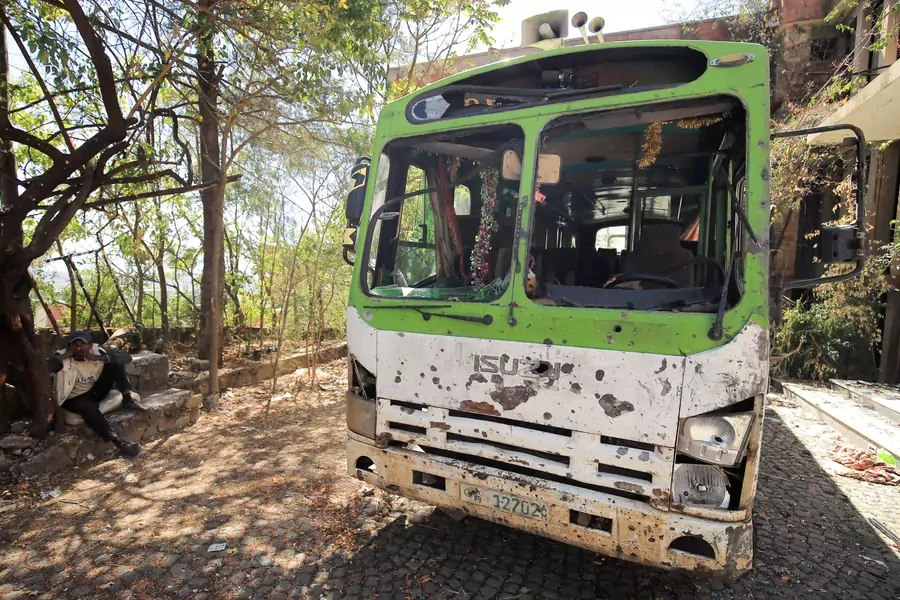Peace Talks for Tigray Delayed

Nearly two years after war broke out in Ethiopia’s Tigray region, the fighting is intensifying, and the interstate dimension to the conflict is as undeniable as ever. Reports indicate that some one hundred thousand Eritrean troops are assaulting Tigray, apparently in coordination with the Ethiopian military. The region has been under siege since June of 2021, with only piecemeal exceptions during the lull in the conflict over this past spring and summer. Humanitarian conditions on the ground grow more dire as the latest combat compounds the suffering of people who have not had adequate access to food or medicine for over a year. Because access to the region is so difficult, observers have been left to speculate on the scale of the human losses.
The world has mustered limited will to address the crisis. Even beyond the gridlock at the UN Security Council, the UN Human Rights Council barely summoned enough support to extend the mandate of the Commission of Experts tasked with investigating major violations of international human rights, humanitarian, and refugee law in Ethiopia, despite the evidence already uncovered of grave crimes committed by all parties to the conflict. Part of the tepid international response springs from African states’ insistence that the matter be addressed within the region. But this presents its own problems.
More on:
The United States’ energetic Special Envoy for the Horn of Africa, Mike Hammer, has been working with African and European colleagues to try to bring the Tigrayans and Ethiopians to the African Union’s (AU) negotiating table, aiming to stop the carnage and build some momentum toward peace. It’s been tough sledding. Over the last week, diplomatic fits and starts have attracted plenty of international attention, but accomplished nothing for the civilians living through this horror.
Talks between the Ethiopian government and Tigrayan leaders were scheduled for October 8 in South Africa under AU auspices. The AU has failed to gain any real traction to date in addressing the crisis under the leadership of former Nigerian President Olusegun Obasanjo. But a new formula–one that formally added former Kenyan President Uhuru Kenyatta and former South African Deputy President Phumzile Mlambo-Ngcuka to Obasanjo’s effort–was unveiled to try to win more confidence from parties distrustful of past attempts. It quickly became clear that the announcement was premature. The Ethiopian government welcomed the initiative. But while the Tigrayans indicated that they were prepared to attend, they pointedly requested basic details about the structure and participants, indicating a lack of consultation. Kenyatta himself similarly signaled that he was left in the dark, revealing that the date didn’t work for him and that he, too, had insufficient information about basic modalities for the talks.
Diplomatic work is often cumbersome, and talks with so many actors and moving parts are bound to present logistical challenges (and likely substantive problems down the line). But shuffling mediators, switching up locations, and finding suitable dates can become pointless distractions if the parties to the conflict have no intention of taking any kind of peace process seriously. An earlier AU effort involving three former African presidents was stillborn when Ethiopia refused to seriously consider dialogue. This time, it seems Ethiopia is happy to engage in a series of meetings, but it is not at all clear that this reflects any indication of political will to make real peace. Airstrikes continue, including one that struck a school last week. Ethiopian leaders do not appear to have been preparing their political constituencies for anything short of total victory. It’s uncertain whether AU talks envision any role for Eritrea, one of the main antagonists in the current conflict. The foundation for progress is not a strong one.
History is full of “peace processes” divorced from reality that diverted critical international attention from the preparation and execution of horrific campaigns of violence on the ground. Policymakers must do more than support the work of the diplomats who are frantically trying to set the table for talks. They need to help build the will to make them successful, by clarifying for all relevant actors–a list that goes far beyond Prime Minister Abiy’s government and the Tigrayan leadership–what the costs of continued war will entail, and what dividends peace could bring.
More on:
 Online Store
Online Store